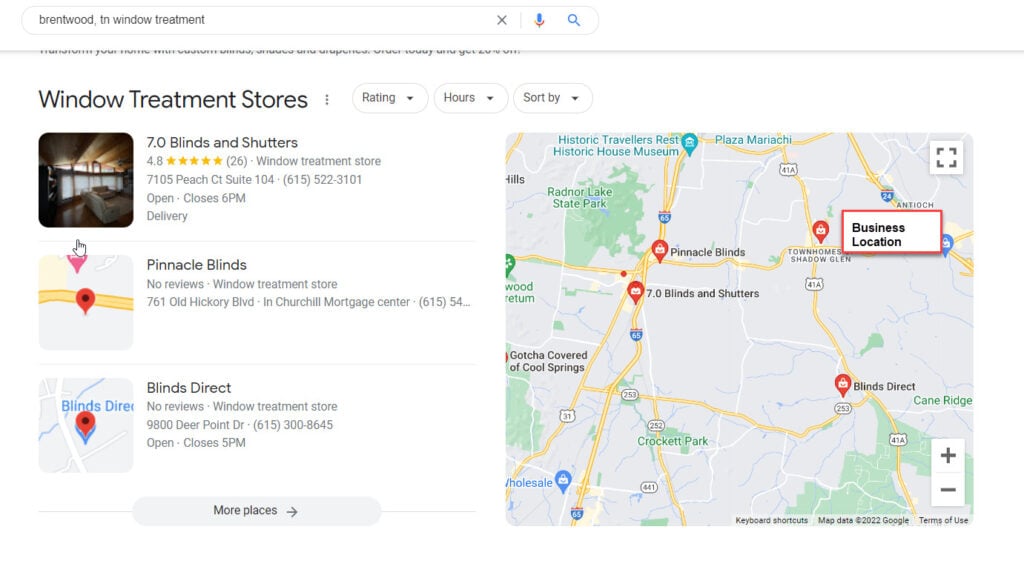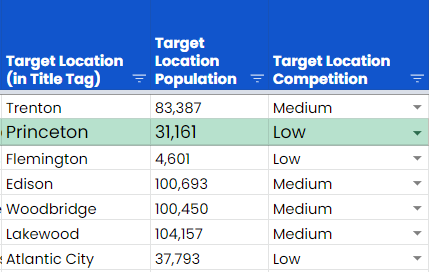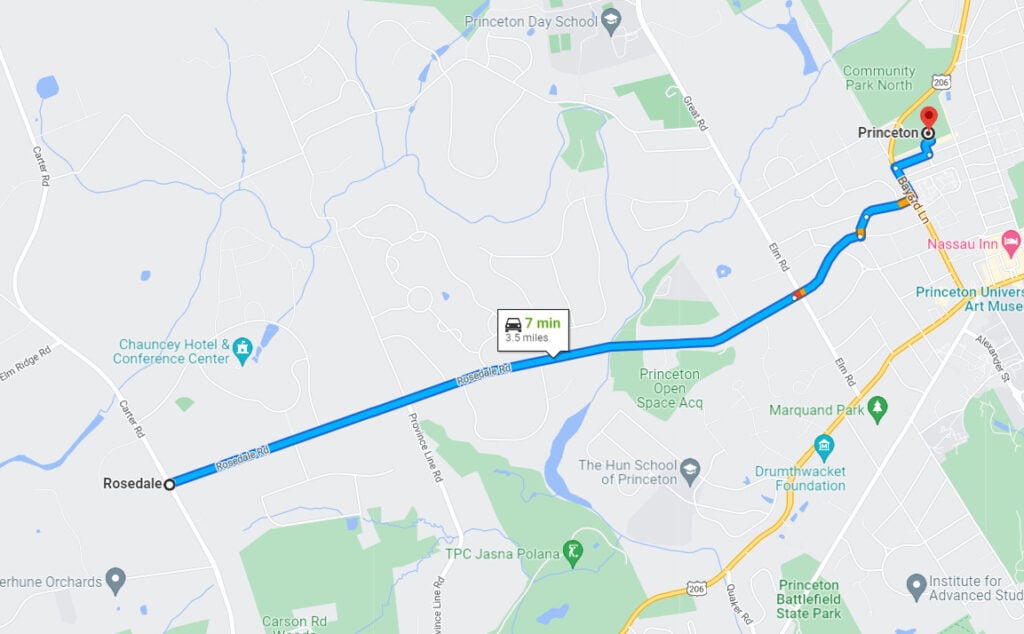If you want to rank in local search results, then you need to consider proximity – is your business close enough to its target audience? Google lists distance as one of three core local ranking factors in its local SEO resources.
But how exactly can a marketer impact business proximity? Typically we can’t just make a business change its address. Or, not usually…
So if we can’t change proximity, then what can we do?
Enter the proximity audit.
What is a Proximity Audit?
The proximity audit is a process that I’ve developed to score local ranking potential. By understanding proximity’s impact, we can develop more informed marketing strategies.
In my previous article about the local search microcosm, location proximity is one layer in a many-layered cake of crucial details to consider when developing a local SEO strategy. In this article, we’ll narrow in on how we can look at business location beyond its fixed position in reality.
Why You Need a Proximity Audit
It’s crucial to consider proximity across your marketing strategy because it’s a local ranking factor. While a business cannot always control where it is located, it can understand how that location will affect other strategies.
Whether you’re managing a single location Google Business Profile (GBP) or an organization with hundreds of profiles, proximity can impact:
- What type of pages you should build
- Which SEO strategy to prioritize
- Which location to prioritize
- Which content on a page needs improvement
- Which competitors to target
- And more
The proximity audit dashboard contextualizes which of these levers will contribute the most to organic traffic growth.
To better understand how proximity affects local ranking strategy, let’s start by looking at an example scenario.
Example 1: Why Proximity Matters for a Local Business
Let’s say a window treatment company in Brentwood, TN signs up for our SEO services. To get an idea of how our new client is currently performing against competitors, we start by Googling, “brentwood, tn window treatment.”
We can see that the top two ranking companies are located near Brentwood’s core city center.
The location ranking at #3, Blinds Direct, requires you to zoom out a bit on the map to see it.
So, where is our client’s (unranked) business located on the map?

Our client’s business isn’t located as close to the city center as the businesses ranking #1 and #2. What does this mean for our strategy?
When a business is farther from the city center, that means it has lower proximity ranking potential. To make up for this, we would need to hone in on better content, more backlinks, and a better website than our competitors.
Based on our research, we can tell our client that it will require a decent amount of effort to rank in their target area. If the business was in a more central location, results might happen more quickly and with less effort.
Stakeholders appreciate an honest assessment of their marketing goals. By bringing proximity into our strategy, we provide transparency and establish a realistic picture of what we can achieve.
How to Complete a Proximity Audit
On the surface, proximity seems like a simple yes/no question in local SEO:
Is the business location close to the target location?
Yes: It’s close so it will rank.
No: It’s far away so it won’t rank.
But it’s not this simple!
When we consider proximity, we must consider its impact on everything. A location is more than a pinpoint on the map. It’s a community of unique individuals, competitors, and demands.
We can use the proximity audit to assess these different factors in a specific marketplace to score local ranking potential and create a more informed SEO strategy.
1. Gather Data
The first step in this process is gathering all of the information that relates to proximity. All of these details play a key role in how much proximity can either inhibit or enable growth:
- GBP location matching target location
- Population of target location and GBP location
- Distance between verified location and target location
- Number of backlinks for a linked page
- Number of referring domains for linked page
Each of these details should be assessed during the data gathering phase.
GBP Location Matching Target Location
When a user searches for services in their city, Google will show them the services that are closest to their location. We can’t game this system, so we should ideally target the city where the business is verified.
Population of Target Location and GBP Location
There is a big difference between ranking in Los Angeles, CA (3.9 million people) and ranking in Azusa, CA (49.5 thousand people). By considering population as part of a proximity audit, we start to understand why it might be difficult to rank in a certain community. It’s often extremely difficult to rank a business in a big city if the GBP is verified in a small suburb.
Distance Between Verified Location and Target Location
This is the literal definition of proximity. A business should be close to where it wants to rank. In the scenario about the window treatment business, all the businesses were located in Brentwood, but those closest to the city center had the best rankings.
Number of Backlinks for a Linked Page
If a business has more backlinks, it might be able to “skip the line” in terms of its ranking proximity. Think of it like this: if a business is considered to be the “best” in town, Google is likely to show it to users from a farther distance. Backlinks are a form of recognition, so a business with more backlinks gets a better proximity score. Use ahrefs or a similar SEO tool to find the number of backlinks for a page.
Number of Referring Domains for Linked Page
Backlinks from a variety of domains indicate a stronger reputation than a large number of backlinks from one domain.
Stronger: 600 backlinks from 300 domains
Weaker: 1000 backlinks from 5 domains
The key is variety. Google gives more weight to backlinks if they come from several different websites. It’s the equivalent of multiple sources corroborating a website’s reputation. You can find the number of referring domains for a page using ahrefs or a similar SEO tool.
2. Calculate the Proximity Ranking Score
Once you have gathered all of your necessary data points, it’s time to organize each proximity detail into a spreadsheet that includes the GBP Store Code and the URL linked from the GBP. Here is a proximity audit template you can use.

Now, it’s time to score proximity by location. I configured formulas in the sheet that assign a score based on distance, competition, and links.
A location with a higher proximity score is more likely to rank.
A location with a lower proximity score is less likely to rank.
3. Evaluate Local SEO Strategy Based on Proximity
A standard local SEO campaign typically leverages some combination of on-page content adjustments, off-page linking, and Google Business Profile optimization. The proximity audit can determine which of these strategies will yield the strongest results.
If it’s a single location business, the proximity ranking score informs how much work needs to be done (see example one).
If the business has multiple locations, the proximity ranking score informs how much work needs to be done for which locations (see example two below).
When you know how much proximity will influence rankings, you can better prioritize your local SEO to-do list. The specifics of that to-do list will vary based on the ongoing needs of the business.
Let’s look at another example for developing a local SEO strategy based on proximity, this time using the audit sheet.
Example 2: How The Proximity Audit Determines Strategy
In this example, we have a roofing company with eight locations across New Jersey that wants to get more business in Princeton, NJ.
Looking at proximity data, we see that Princeton, our target location, aligns with the page’s URL and H1. However, the address is in Rosedale, NJ. Does this mean the business can’t rank? Not necessarily.

Fortunately, Princeton is relatively low competition with a population of 31,161 people.

Next, we’ll look at the distance between the GBP address and target location, as well as the number of backlinks.

While Rosedale is a different location than Princeton, it’s only 4 miles from Princeton. Additionally, the location has 30 backlinks, which is more than other locations.

Overall, while the address should ideally be located in Princeton, its low competition, high backlinks, and relatively short distance from the verified address add up to a higher proximity score and strong ranking potential for Princeton.

Because we know that Princeton has strong ranking potential, we’ll prioritize the strategy for this target location. So if this location page needs new content, that should happen before other locations. Or, if all eight of the roofing company’s Google Business Profiles need to be optimized, then we should start with Princeton.
In this example, we used proximity data to refine our SEO strategy. By starting with Princeton, we can more quickly achieve rankings and organic traffic growth. Rather than working through a “generic,” to-do list, we’ve determined the region that will deliver the most value.
You Can’t Change Proximity, But You Can Use It
Marketing boils down to one fundamental philosophy: Growth=time x money
If you don’t have time to improve your website, then you won’t rank.
If you don’t have money to invest in that growth, then you won’t rank.
But the real question is: where do you spend your time and money?
Proximity can answer this!
If time and money are poorly directed, then growth won’t happen. This is why proximity matters. By developing a marketing strategy around realistic opportunities and challenges, a business is making an informed decision. We can say that by investing in X location, we’ll see a return within the next few months. Meanwhile, the Y location is farther away and either needs a new address, a new target location, or a long-term strategy.
With a proximity audit, the marketer determines next steps based on factors specific to the local business rather than generic SEO assumptions that may or may not apply.
If you want to achieve local rankings and the growth that comes with them, take your time when considering business proximity. It can make all the difference.
The post Yes, Proximity Is A Local SEO Ranking Factor: How to Do a Proximity Audit appeared first on Portent.




